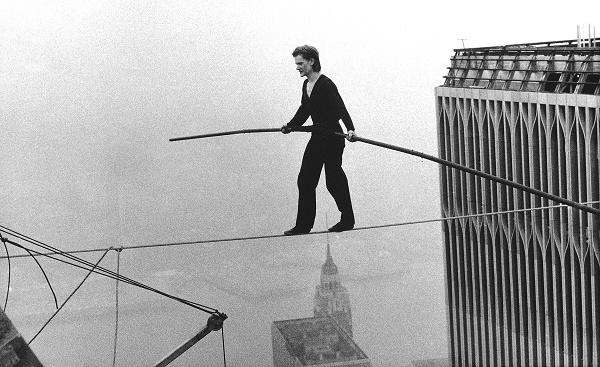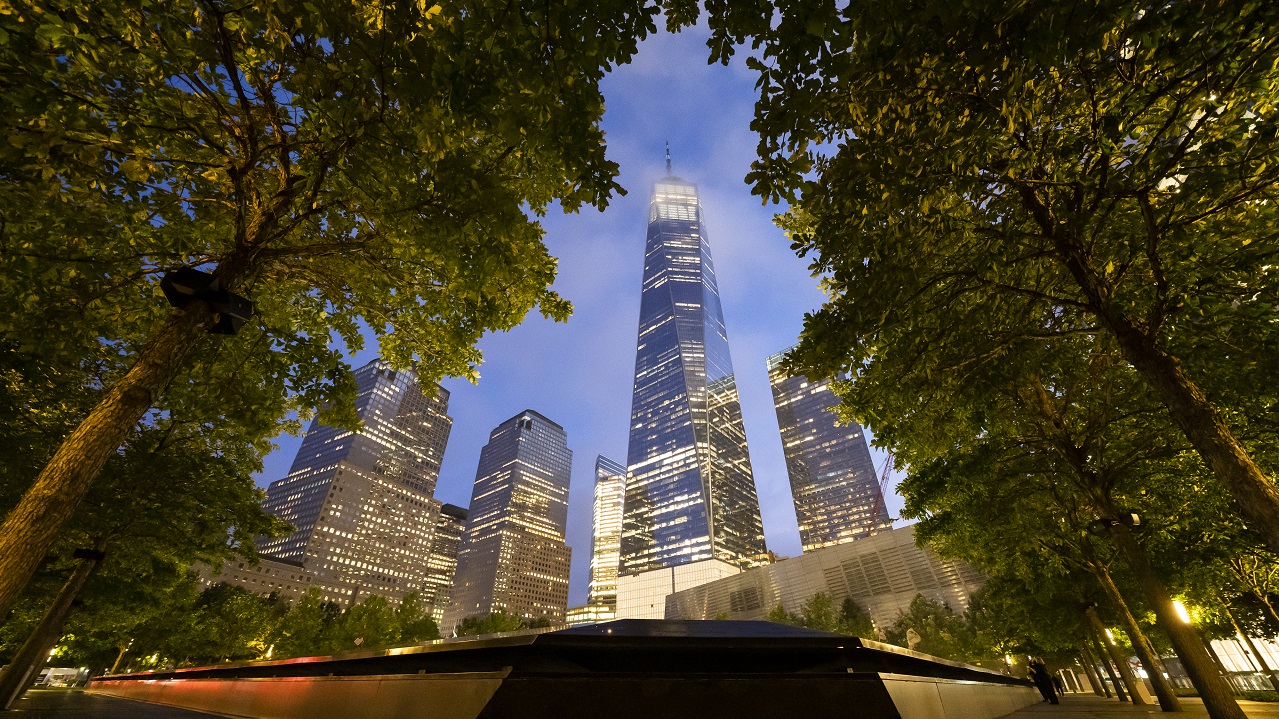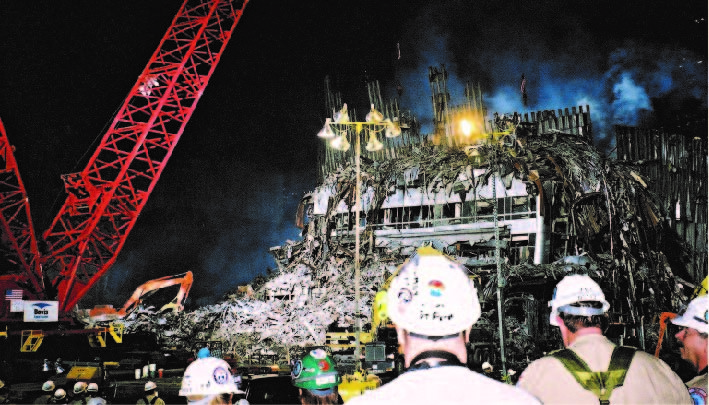Make a donation to the museum
Marking the 46th Anniversary of Philippe Petit’s High-Wire Walk Between the Twin Towers
Marking the 46th Anniversary of Philippe Petit’s High-Wire Walk Between the Twin Towers

On this day in 1974, 24-year-old French high-wire artist Philippe Petit took his position at 1,350 feet above ground on the edge of the South Tower during the early morning hours. Petit’s 131-foot hire-wire walk between the Twin Towers made history and was the subject of an award-winning documentary.
Six years prior, Petit had started planning “le coup,” which is what he called the unauthorized performance in the sky. He spent the ensuing years learning everything he could about the buildings and their construction. “If I see two towers, I have to walk,” said Petit. “Anything that is giant and manmade strikes me in an awesome way and calls me.”
Petit didn’t just walk; he performed for the crowd of thousands that gathered as he walked back and forth for 45 minutes, laid down, saluted the sky and waved hello to birds in flight—all without the protection of a net. Called the “artistic crime of the century,” Petit was arrested after his performance, but the charges were dropped in exchange of a free kids show in Central Park.
By 9/11 Memorial Staff
Previous Post
Remembering New York City Journalist Pete Hamill

We are saddened by the loss of one of New York City’s singular talents, the great Pete Hamill, who captured through his writing the juncture of grief, compassion, empathy, patriotism, and community that so distinguished the days and weeks after the 9/11 attacks.
Next Post
Explore the Redesigned Rescue & Recovery Workers Registry

The 9/11 Memorial & Museum redesigned its Rescue & Recovery Workers’ Registry, which serves as a digital archive of stories from rescue and recovery workers and other communities impacted by the 9/11 attacks, the 1993 World Trade Center bombing, and the ongoing repercussions of both events.